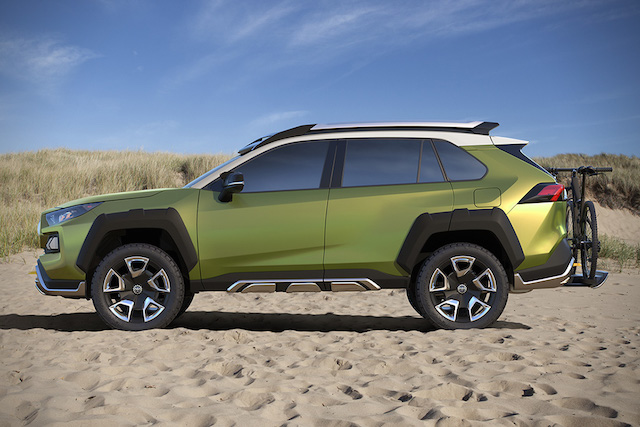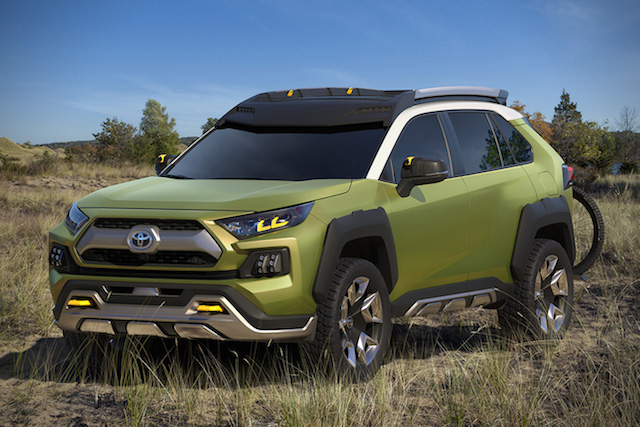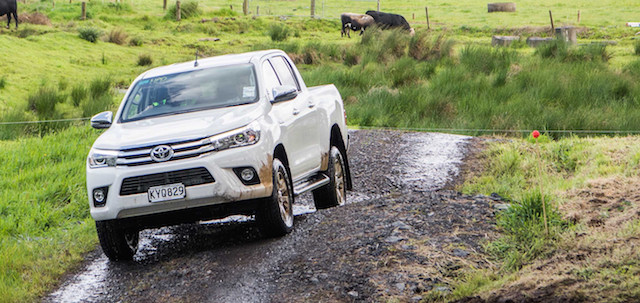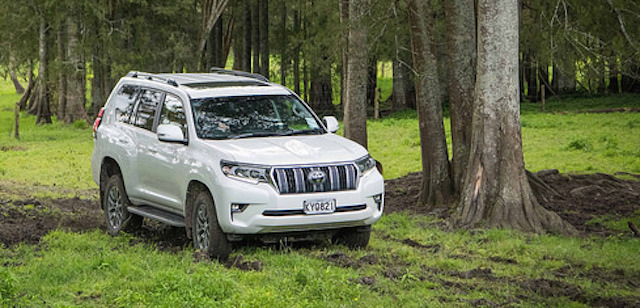
Toyota’s latest lifestyle concept introduces a new world of connectivity, with embedded infrared cameras on the side mirrors, a Wi-Fi hotspot and rear-facing lights that can be controlled via a smartphone app.
It’s the all-wheel-drive FT-AC, for “future Toyota adventure concept”, and its detachable cameras can store and/or stream to the web, whether on the car or mounted to bikes or helmets.
Toyota unveiled the FT-AC at the Los Angeles motor show. Size wise, it’s in between the RAV-4 and Highlander.
“It’s no coincidence then that FT-AC makes its debut in a city where much of the population escapes to the hills, deserts, or beaches for their much-needed weekend recharges,” said Toyota.
The concept features styling elements that hark back to the design of the FJ Cruiser as well as earlier Land Cruisers.
Off-road elements of the FT-AC include vehicle-recovery hooks, skid plates to protect against rocks and ruts and fog lights that can be detached and used as portable lamps.
The chunky crossover comes with big tyres, flared mudguards, and ample ground clearance. It also is equipped with a safari roof rack and elevated LED lamps that can light up the area around the vehicle.
The FT-AC is imagined by Toyota as a petrol-powered vehicle that also could be fitted with a hybrid powertrain. Asked if would go into production, Toyota North America vice-president Jack Hollis said: “I don’t like doing concepts just for concepts’ sake.”
He admitted that FT-CA was “more doable” than the FT-4X concept, shown at the New York motor show in April and based on the C-HR.
The FT-4X is aimed more at a male, outdoorsy demographic group without being a hardcore off-road vehicle. It was the first Toyota concept of 2017. The second appeared at the Tokyo motor show in October. It’s the TJ Cruiser, a vanlike take on the crossover segment, with sliding rear doors geared to a surf-and-sun lifestyle.
All three concepts are designed around the Toyota New Global Architecture, a flexible platform that underpins the C-HR and the latest generations of the Prius and Camry and coming soon to the new RAV-4.
Meanwhile, Toyota NZ has dropped the 4.0-litre V6 petrol engine from the updated Hilux and Prado range.“Light truck customers are looking for more automatic transmission options, while the demand for petrol utes has fallen away,” said Steve Prangnell, Toyota NZ sales manager.
He said demand for the V6 Prado had also tailed off in favour of the 2.8-litre diesel, also used in Hilux. “The diesel engine option is the main choice of customers in this segment, so much so that petrol Prado sales had reduced to a level that is no longer viable,” Prangnell said.
“Plus at Toyota we are realigning our petrol models to lower our overall carbon footprint. Prado is the biggest selling large SUV in our range, so we don’t think the lack of the petrol model is going to impact sales numbers.”
Changes to the Hilux include more variants with automatic transmissions, a common 3.5-tonne braked towing rating across all PreRunner and 4WD powertrains, and a differential lock added to the PreRunner range. Hilux is priced between $36,390 and $62,690.
The updated Prado gets a braked towing capacity of 3000kg, up from 2500kg. Added also is a suite of safety aids, including pre-crash emergency braking. A Torsen limited-slip rear differential is now fitted to the top of the range VX Limited, replacing the electronically lockable rear differential. Prado is priced between $79,490 and $99,990.




